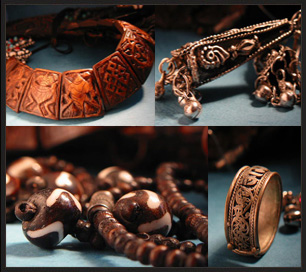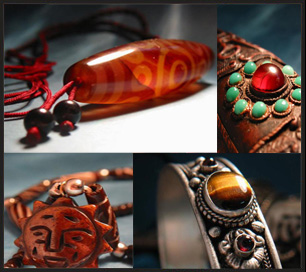|
abhaya mudra, mudra hand gestures, buddha mudra, tibetan mudra, buddhist mudra, buddhism mudra
Tibet Artwork, Tibetan Silver Jewelry , Tibetan Jewelry, Tibet Jewelry, Jewelry from Tibet, Tibetan Buddhist Jewelry, Tibetan Turquoise Jewelry, Tibetan Jewelery, Buddhist Jewelry
|
|
According to Buddhist tradition, the historical Buddha made this gesture immediately after gaining enlightenment. And later, when the historical Buddha was about to be attacked by an angry elephant, he held up his hand in the fearlessness gesture and immediately calmed it.
The gesture of fearlessness is is only seen on Buddhas or boddhisatvas and appears most commonly in standing images. In Thailand and Laos, the abhaya mudra is seen on the walking Buddha (also called 'the Buddha placing his footprint'), a posture unique to that region.
When the right hand is in the abhaya mudra, the left hand usually hangs loosely at the side of the body or makes the varada mudra, or gift-giving gesture. In some SE Asian Buddha images, both hands are held in the abhaya mudra.
In Gandhara art, this mudra was sometimes used to indicate the action of preaching. This is also the case in China where it is very commonly found in images of the Buddha, mainly in the Wei and Sui eras (4th to 7th centuries).
The abhaya mudra is the gesture of the fifth Dhyani Buddha, Amoghasiddhi. By meditating on him, Amoghasiddhi helps in overcoming the delusion of jealousy and transforming it into the wisdom of accomplishment. Since jealousy can be seen as a type of fear, the gesture of fearlessness is appropriate for this Buddha.
--------------------------------------------------------------------------------------------------------
Labels: abhaya mudra, mudra hand gestures, buddha mudra, tibetan mudra, buddhist mudra, buddhism mudra
Tibet Artwork, Tibetan Silver Jewelry , Tibetan Jewelry, Tibet Jewelry, Jewelry from Tibet, Tibetan Buddhist Jewelry, Tibetan Turquoise Jewelry, Tibetan Jewelery, Buddhist Jewelry
|
Buddhist Symbols
In the earliest centuries of Buddhism, statues of the Buddha were not used. Instead, Buddhist art consisted of images symbolizing the Buddha and his teachings, such as the lotus, the Wheel of the Law, the Bodhi tree and the Buddha's footprints.
Eventually, the Buddha image became one of the most popular representations in Buddhism, but these early symbols remain important and are frequently used to this day. They are especially important in Theravada Buddhist countries like Sri Lanka and Thailand.
As Buddhism spread, Buddhist symbolism was enriched by the cultures it came into contact with. This is especially true of Buddhism in Tibet, which has developed a rich symbolic tradition. The central symbols of Tibetan Buddhism are the Eight Auspicious Symbols, known in Sanskrit as Ashtamangala (ashta meaning eight and mangala meaning auspicious). The Eight Auspicious Symbols are printed on Tibetan prayer flags, incorporated into mandalas and thangkas, and used in other forms of ritual art. Another important symbol is the Wheel of Life, a symbolic representation of the universe as understood by Tibetan Buddhists.
Other important types of symbolism in Buddhism include colors, especially the five colors of white, yellow, red, blue and green, and symbolic hand gestures called mudras. The articles in this section explore these Buddhist symbols, providing information on their history, meaning and use in Buddhism today. (For an introduction and quick guide to Buddhist colors, see our Chart of Buddhist Color Symbolism.)
|
|




添加新评论